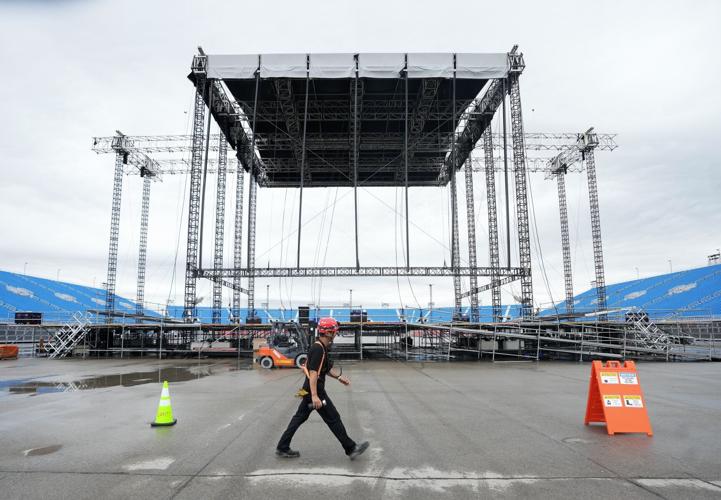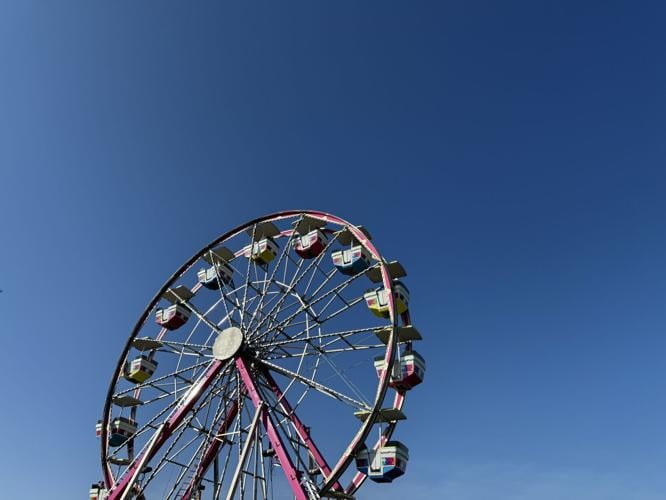At first glance, Downsview Park and the former site of the Downsview airport seem like perfect sites for a stadium.
The area offers a wide-open space, a view of ╬┌č╗┤½├Į’s glimmering skyline and has╠²already hosted almost half a million people for a benefit concert in 2003.
For now, Rogers Stadium ŌĆö Live Nation’s 50,000-person, temporary venue, which opened Sunday with a performance by K-pop superstars Stray Kids ŌĆö is filling that role, hosting Oasis, Coldplay and Hozier, among others, in its inaugural summer.
So could the area be the site of a permanent stadium after Live Nation packs up shop?
Urban planning experts say the location is both intriguing and unique, but the land’s owners don’t intend to forgo greenspace in favour of a fixed stadium. Here’s what we know about the future of the site.╠²
Is Downsview╠²a good spot for a permanent stadium?╠²╠²
In theory, stadiums normally work in areas where the land is cheap and the parking is plentiful, or in a central location served by transit and large population centres, says Laura Taylor, an associate professor of urban planning at York University.
With 400 acres to work with, Northcrest Developments CEO Derek Goring is “excited about its potential,” and says his experience in public and
With 400 acres to work with, Northcrest Developments CEO Derek Goring is “excited about its potential,” and says his experience in public and
But Downsview sits somewhere between those extremes.
ŌĆ£This particular spot is not really either of those. ItŌĆÖs not in the middle of nowhere, and itŌĆÖs not in the middle city,ŌĆØ Taylor observes. ŌĆ£ItŌĆÖs a bit of an experiment in many ways.ŌĆØ
Still, Taylor notes that it’s a huge area inside an otherwise completely suburban part of ╬┌č╗┤½├Į, which gives it a walled-off feel.
“It’s unique for us. It’s not unique when you think about cities across the world who have had to deal with military industrial areas that have been redeveloped,” Taylor observes. “Most cities have similar examples, but it is definitely like that for us.”╠²
The temporary nature of the stadium wouldn’t necessarily be disqualifying, either. There’s a precedent for temporary infrastructure leading to more permanent city fixtures, notes Karen Chapple, a professor of geography at the University of ╬┌č╗┤½├Į and director of the School of Cities.
New York’s Arthur Ashe Stadium stands on the site of the U.S. Pavilion, which was built for the World’s Fair in 1964 and demolished just over a decade later. In Vancouver, the SkyTrain monorail was constructed, in part, for Expo 86, and it still continues to be the city’s predominant rapid transit system.╠²
“You see other cities functioning like that,” Chapple said. “They’ll support a large temporary intervention in the hopes that it will spur long-term catalytic change.”
Why won’t it work as a site for a permanent stadium?
Much of the surrounding land has been plotted for use in a sprawling, live-work-play region composed of 15 transit-oriented neighbourhoods, expected to eventually house╠².╠²Construction is expected to begin in the next few years╠²and won’t be ready for decades, at the earliest.╠²
Rogers Stadium currently stands on the former site of Downsview airport, which is owned by Northcrest Developments, a subsidiary of the Public Sector Pension Investments Board, a federal Crown corporation. Canada Lands Company, another federal Crown corporation, owns additional land planned for development, including .
That area ŌĆö home to Festival Terrace (which hosts VELD), a dog park, and a network of trails ŌĆö has no future as the site of a stadium.
“The forest, the park area is going to stay forever,” said Rob Ng, Canada Lands’ director of attractions. “As the neighbourhoods develop around Downsview Park, we are very proud to say that that green space is going to be there, and we think that it’s going to form sort of a central park in North ╬┌č╗┤½├Į.”
Sarah Phipps, the project director who is overseeing Downsview’s redevelopment for the city, notes that the “stadium” suffix in the current venue’s name makes it seem more permanent than it actually is, but there’s no plan to change it to allow for a stadium to be built long-term in the park itself.╠²
“It would not be our advice or our recommendation to council to change the designation of any of that land to allow for that kind of use,” she told the Star. “There’s nothing in our planning documents that indicate that it should be anything except parkland.”
How long will Rogers Stadium last?
During a tour, Live Nation confirmed that the venue would last for five years and would be partially torn down at the end of every summer.╠²
“Ideally, we can leave some of the scaffold structure up because that’s the hard part,” says Wayne Zronik, Live Nation Canada’s president of business operations. “I liken it to opening and closing a cottage or a cabin in the woods. You have to winterize it.”
This summer, it’ll host Coldplay for four nights and Blackpink and Oasis for two nights each, among others. Between that octet of shows alone, as many as 400,000╠²fans could pass through its turnstiles.╠²
Zronik declined to specify the total cost of the stadium, but referred to it as “a worthwhile investment” that will drive “broader economic impact.”╠²
“We’ve made a sizeable investment, let’s just say that,” Zronik said.
What happens after the stadium is gone?
Festivals and concerts will continue at Downsview, but not in the form of a permanent mega-stadium or to a degree that would negatively impact residents of the to-be-constructed neighbourhoods, Ng said.╠²
“Maybe the scale of our events will change. Maybe it’s a question of shaping or placing the events in a different spot rather than Festival Terrace,” he noted. “But taking away the venue space from the city is not going to be good for the city. It’s not good for the arts, it’s not good for entertainment.”
East of the park proper, YZD ŌĆö the 370-acre, seven-neighbourhood development by Northcrest on the former airport site where Rogers Stadium currently stands ŌĆö as the apartment and condo buildings, shops and public spaces╠²are built.
Mitchell Marcus, Northcrest’s executive director of site activation and programming, said that they’re going to be engaging with local arts partners and organizations for programming╠²as part of their “meanwhile use strategy” as the neighbourhoods get built.╠²
“We’re saying yes as much as possible to things that couldn’t happen in ╬┌č╗┤½├Į were it not for the fact that we collectively have this big site,” Marcus said.╠²╠²

































To join the conversation set a first and last name in your user profile.
Sign in or register for free to join the Conversation